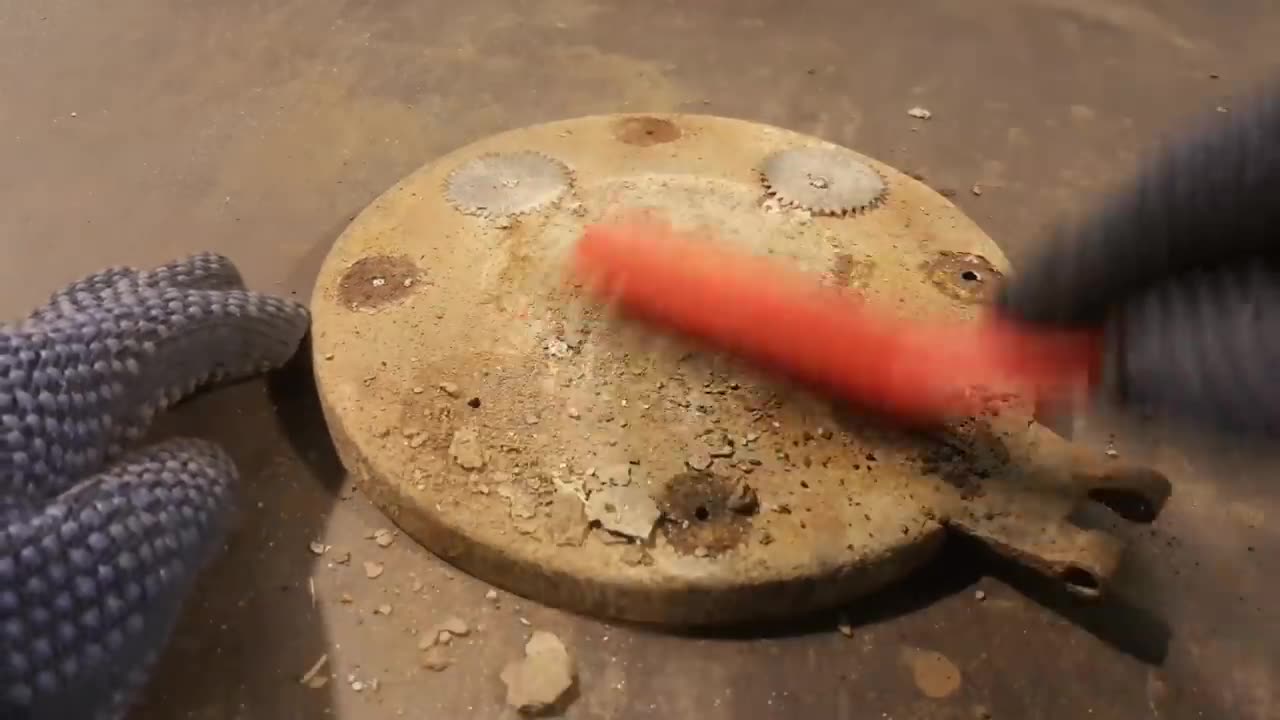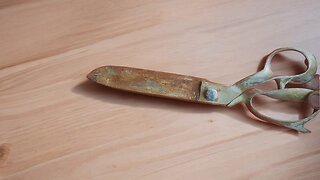Premium Only Content

VERY RARE OBJECT - RESTORATION - The complete story
In areas with cold winters, such as Europe, a bed warmer or warming pan was a popular home item. This device was widespread in more well-to-do people's homes in the late 1700s and early 1800s but eventually became obsolete due to changes in fireplace design and the obviously frequent fires that occurred, killing the sleeper more frequently than not. I'm sure there have been some incidences of people's feet being burned as well. When the damage occurred, such a rare artefact must have been utilised for a long time before being set up as a showcase. [requires citation] It was made up of a metal container with a handle, formed like a modern frying pan, and a metal lid. Lids that are solid or finely perforated. To warm it up or dry it up before use, the pan would be filled with coals and placed beneath the covers of a bed.
Aside from the danger of fire, the embers' vapours were known to be poisonous. A doctor urged his readers to avoid using bed warmers and instead use hot sand to replace the embers if necessary.
The "bed waggon" was an alternative to the bed warmer (moine in French, Monaco in Italian, both meaning "monk"). The bedsheets were protected from direct heat by a massive wooden frame enclosing a bucket of embers, possibly with an iron tray and an iron roof plate.
Pottery that had been filled with hot water was also employed.
[needs citation] With the introduction of The hot water bottle, made of rubber, became the most popular. Electric blankets began to take their place in the early twentieth century.
A 36 cm/14inch pressed steel 'flying saucer' or lozenge-shaped device developed by Belling (founded 1912) was an alternative type of bedwarmer in the UK in the mid-20th century, powered by an inbuilt 40W incandescent light bulb as a heat source.
-
 8:50
8:50
Old Is Gold
1 month agoOld Rusty Scissors Restoration | Restoration Video
40 -
 0:46
0:46
Dr Disrespect
2 days agoIt's not just a stream... it's an experience
481K2.82K -
 1:28:27
1:28:27
Kim Iversen
1 day agoBOMBSHELL: Secret British Military Plot to Prolong the Ukraine War And Take Down The Grayzone
89K86 -
 11:54
11:54
Professor Nez
6 hours ago🚨CHILLING REVELATION: Tucker Carlson Reveals Dems NEXT PLAN to STOP Trump!
70.9K27 -
 6:51
6:51
Colion Noir
6 hours agoI have Something To Say To Gun Owners
42.9K16 -
 1:18:24
1:18:24
Glenn Greenwald
10 hours agoLiberals Encourage Family & Friends To Separate Over Political Disputes; Segment Debut Of System Pupdate: Profiles Of Rescued Dogs | SYSTEM UPDATE #373
102K161 -
 1:24:53
1:24:53
Flyover Conservatives
1 day agoMarketing Madness or Manipulation? The War on Western Identity - Alex Newman; Economic Update - Dr. Kirk Elliott | FOC Show
39K5 -
 1:15:05
1:15:05
PMG
1 day ago $6.96 earned"Big Pharma EXPOSED: The HIDDEN Cures They Tried to Bury"
32.4K6 -
 3:26:12
3:26:12
Tundra Gaming Live
7 hours ago $2.14 earnedThe Worlds Okayest War Thunder Stream
29.1K1 -
 1:49:52
1:49:52
VOPUSARADIO
14 hours agoPOLITI-SHOCK! Back To Back Guests: Rebekah Koffler & Dr. Michael Schwartz
19.9K